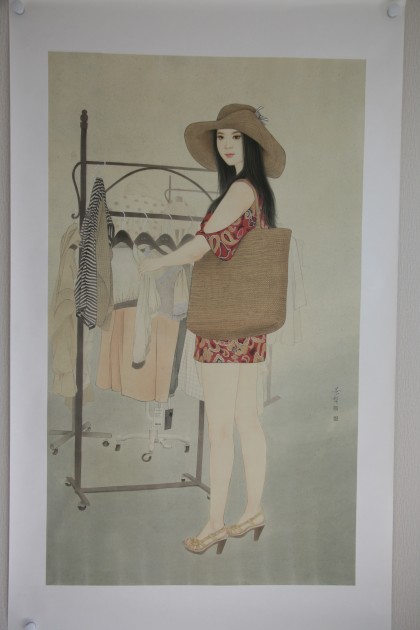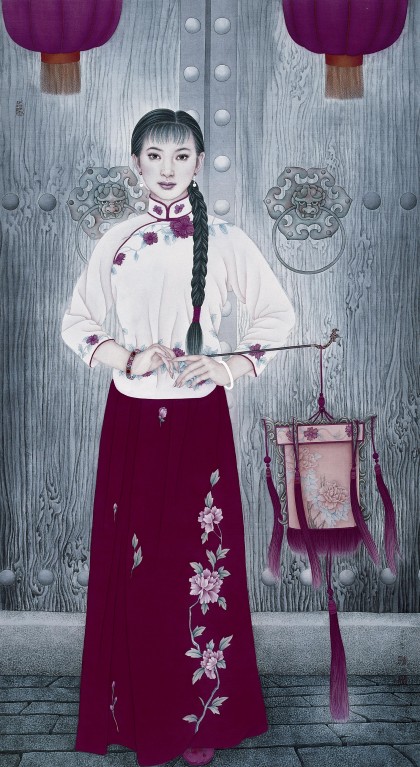
17 Jun Cui Jingzhe: Artistic Tradition Rehabilitated
By Sarah El Khaldi
As a fifth-generation descendant of the Qing imperial court painter Cui E Hui, Cui Jingzhe is acutely aware of his own heritage, as well as that of his culture. The thirty-five year old painter has established himself as a prominent figure on the Chinese art scene, and he is contributing to the reemergence of the iconic, classical tradition of imperial style painting as a modern and current one. According to the latest Artprice expert report on the international art market, Cui Jingzhe ranks tenth in the category of global young artists.
Cui Jingzhe grew up in the Muslim province of Xinjang, China, and spent most of his childhood following his military father’s frequent travels. During his teenage years, the artist experimented with painting and sculpting under the trained eye of his father. Cui Jingzhe later graduated from the department of traditional painting at the Tianjin Academy of Fine Arts and the National Academy of Arts.
In Chinese culture, red symbolizes newly weds but also evokes the cultural revolution engineered by Chinese communist leader Mao Zedong. The color red is also omnipresent in Cui Jingzhe’s work, and it highlights a historical continuity between the contemporary artist and his imperial Manchurian origins. In an interview for the French daily newspaper La Croix, Cui Jingzhe discussed the transcendental and unconfined meaning of the color red in the Chinese collective imagination: ” In our 5000-year-old civilization the clothes of newly weds have evolved and changed with the times, but one aspect of it has remained: the color red!”.
Thus this symbol remained throughout the Opening Reforms Era and the wave of globalization that has swept through China since the 1980s. It is a common thread, a branch of a genealogy. The everlasting imperial red color preserves the memory of Cui Jingzhe’s rich lineage, despite the revisionist fever of the previous Maoist decades.
In the early 21st century, the Cui Museum was inaugurated in the city of Tangshan to celebrate the exceptional artistic contributions of the family, displaying many pieces of jade art, fine China, vases and ancient furniture as a testimony to the Cui’s genius craftsmanship. As French reporter Dorian Malovic remarks, Cui Jingzhe thinks of himself as an ambassador of this rehabilitation movement which is seeking to preserve the great ancient Chinese traditions, free from political appropriation.
The young painter has received many prizes since 1997, when he obtained third prize in the National Painting and Calligraphy exhibit, including his recent distinction in the National Gongbi-Style Landscape Painting exhibit for his work Birch. Cui Jingzhe’s fame has expanded beyond the borders of China, and his work has been showcased in Thailand, Singapour, Dubai, Paris (in April 2015) and, most recently, at Art Monaco 2015.
“The thirty-five year old painter has established himself as a prominent figure on the Chinese art scene and is contributing to the reemergence of the iconic classical tradition of imperial style painting as a modern and current one.”
“Red in Chinese culture symbolizes newly weds but also evokes the cultural revoution engineered by chinese leader Mao Zedong.”
“In our 5000-year-old civilization the clothes of newly weds have evolved and changed with the times, but one aspect of it has remained, the color red!”
“Cui Jignzhe thinks of himself as an ambassador of this rehabilitation movement seeking to preserve the great ancient Chinese traditions.”





